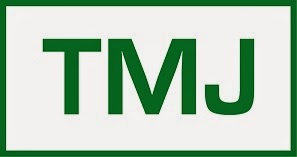Christmas is only once a year, and temporary short term jobs pop up around that season like Santa Claus roles as part-time jobs in department stores. However it turns out that during holiday season with family gatherings like July 4th or independence day, not everybody wants to stay home and talk to grandma. As a result this is when ordinary women notice that the price for prostitution from men bored, and from out of town, but in the big city of Chicago, peaks. It provides a perfect tax free opportunity to make money for a short period of time often with a temporary client base who do not even live in the city, hence no long term repeat business, just a short term windfall of cash.
We know about health and cleanliness but "Why are doctors so bad at washing their hands?". It turns out that in many US hospitals, the standards were lower than the perceptions by even the doctors themselves. Most doctors when honest admitted to washing regularly 70% of the time. This contrasted with the nurses who observed them washing less than 20% of the time! Until a meeting where doctors present touched their hands in a petri dish and observed over weeks the bacteria growth, that things changed. The use of these petri dishes in the form of a screen saver later used in the hospital, proved popular as a clear visual reminder. In fact, other hospitals started to use the same screen saver in order to help spread the message. The benefits to the patients has been medically and economically extraordinary.
One personal favorite question asked was "Which adds more value: a Pimp or a Realtor?". Again data on such a comparison is difficult to find, but when focused can be created organically by coordinating on the ground with the prostitutes and home sellers themselves. One is clearly more difficult than the other. Some of the data points found though were not expected, like how much revenue from any prostitute is given up in "free" services to police officers, in order to avoid prosecution. We discover what is literally her "cost" of doing business!
It turns out that a pimp does have a direct impact on higher earnings, as he typically acts as a marketer within high-end markets for his prostitute who usually relies on lower end street traffic. It brings a higher paying customers base to a low cost service zone, very much an economic development. This helps bring a better margin for the worker, who can then work less often, but at a higher rate of pay. This is contrasted in time value with a realtor who often encourages a homeowner to sell at the first price offered. Even though if it were their own home, they would wait longer for a higher offer, it is a pattern. It comes down to how much any extra commission is worth for the extra weeks in time spent. The breakdown of this incentive system is very well explained. It turns out to be a very solid case.
The Top 3 Takeaways from this book that really impact any reader are:
1) There is a lot to learn about the real economy around prostitution. I was very surprised to learn that 7% of transactions are free services to police officers in order to avoid arrest.
2) The impact of pimps for prostitutes is often positive economically. A pimp can often act as a marketer and find high end customers. This increases wage income and hours worked compared to independent prostitutes.
3) Input from global warming or global cooling needs another point of view. Can can we cool the planet quickly if we really needed to fast? Quick solutions are possible but not very attractive. However, they are a start.
There are many more questions that are fascinating reading. They include "What's the best way to catch a terrorist?" or "Did TV cause a rise in crime?". Another is "Can eating kangaroo save the planet?" As safety and the car industry interests me, one question really got my attention, and that was "How much good do cars seats do?" Installing them correctly is more difficult than many parents can handle. This kind of product needs better execution clearly, despite the positive intentions of the parents themselves. No matter what the question posed is, this team makes me want to read the answer they find every time time. Highly recommended!
Please visit us for our Friday Feature Review where TMJ Partners will review books, movies, conferences and anything else with a financial theme. Follow us now for our free weekly updates, just click here. Thank you for reading and learning more about how money is made in finance!
For more Buy-Side and Sell-Side roles in Asia-Pacific, contact our TMJ Partners Japan & Asia Finance team.
Tokyo Tokyo






